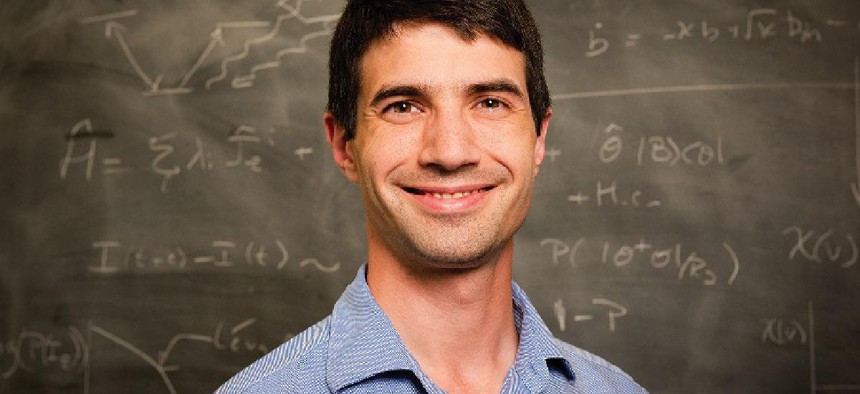'Great Technological Importance:' NIST's Pioneering Young Scientist
Jacob Taylor is at the cutting-edge of theoretical physics and breaking the boundaries of what is possible.
Scientists worldwide are working to make giant advances in medical technology, online communications and computing. As a young physicist at the National Institute of Standards and Technology (NIST),
Taylor, 34, devised original scientific theories that could lead to medical imaging in microscopic detail for better health care, while harnessing the quantum properties of matter so greater quantities of information with higher resolution can move faster and more securely across the Internet.
As a fellow at NIST since 2009, Taylor has conceived a number of original theories, including a way to vastly improve magnetic resonance imaging to enable probing down to the cellular and molecular levels. This approach holds the promise of providing detailed information that could lead to far better diagnoses, more targeted medical treatments for patients and rapid turnaround for drug discovery.
He is also responsible for a major breakthrough that could eventually permit the routing of greater quantities of information over the Internet than now possible, while using reduced levels of energy. In addition, Taylor has proposed a novel theory that could help advance the elusive drive toward quantum computing, permitting exponentially faster calculations then conceivable on conventional computers.
Mihkail Lukin, a Harvard University professor of quantum optics and atomic physics, said scientists around the world are examining how to harness quantum properties of matter to gather information with higher resolution and sensitivity, to process greater quantities of information faster and more securely, and to advance the technology of computing.
“Jake has made fundamental contributions in all three of these areas,” said Lukin, Taylor’s former professor. “He is one of the most creative young scientists I have ever seen. He thinks about problems in unusual ways and comes back with new and novel ideas.”
William Phillips, a NIST fellow and a Nobel Prize winner in physics, said Taylor’s ideas are at “the cutting-edge of theoretical physics.” But Phillips said Taylor also “thinks about reality and the practical application of his complex work,” and is engaged in a wide array of experiments that could have “great technological importance” for electronics and communications systems used by consumers and industry.
One of Taylor’s major accomplishments has been the use for the first time of diamond-tipped sensors that can perform magnetic resonance tests on individual cells or on single molecules, a sort of MRI scanner at the microscopic or nano-scale. The work raises the possibility that physicians one day will be able to use the technology to detect diseases at a far earlier stage, and that drug companies may be able to devise more effective medications because of the precise information that will flow from the advanced imaging technology.
Taylor said it is “a thrill to do something that no one has dreamed up or done before. The long term implications of some of these projects could be huge. It’s what gets me up in the morning—the feeling I can really change the world, at least in small steps.”
This is the sixth in a series of profiles featuring the recipients of the 2012 Samuel J. Heyman Service to America Medals. Presented to outstanding public servants by the nonprofit Partnership for Public Service, and sponsored in part by Bloomberg, Booz Allen Hamilton, The Boston Consulting Group, Chevron and United Technologies Corporation, the prestigious Sammies awards are offered in nine categories. To nominate a federal employee for a 2013 medal go to servicetoamericamedals.org.




